Boiler Installations
Domestic boilers in the UK, comprise of many different styles and are wired in may different formats. This site outlines a few of the most common types. There are in the main two styles of boiler, the combination boiler (combi) and the upright boiler (one found behind a fire place or standing in a kitchen.
There are some brief descriptions to the advantages and disadvantages for three different types of system available on the market today, which include simple diagrams explaining how typical systems are built up.
You will find examples of plumbing installations as well as line diagrams for the electrical layouts for these systems. For full details on wiring boiler systems, always refer to the manufacturers literature, as products are often updated, and simple mistakes can be expensive!
1. COMBINATION BOILERS
Combination
boilers
come
ready made with pumps and valves included in there system, and are generally referred
as the ‘easier option’.
-
No tanks required in the loft
-
No cylinders required to store hot water
-
No need to install separate pumps on normal size systems
-
No need to install zone valves (unless you are splitting the system up into more than heating and hot water )
-
No wiring required other than a supply to the boiler (and a remote stat if required)
-
Mains pressure hot water
-
No energy wasted heating un-used hot water
-
Pressurized system – preventing airlocks
-
Programmer generally included on the boiler
Disadvantages
of this system are:
-
Filling the bath can be slow, as you might need to turn down the water flow to make the water hot
-
Hot water has to be heated instantly before it reaches the tap (though some new combi boilers now come with a small on board tank to store about 7 litres of hot water).
1. Combination Boiler Systems
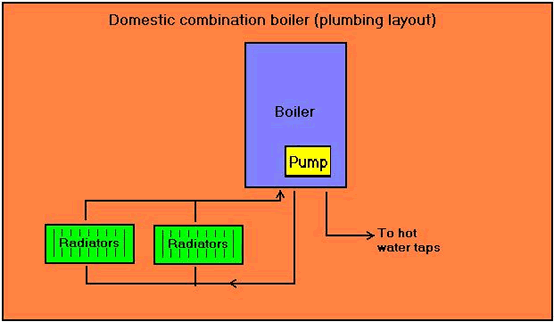
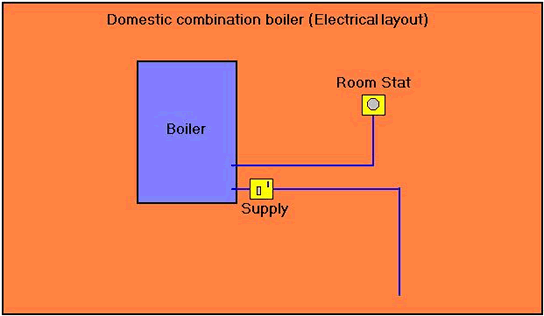
2. TRADITIONAL BOILERS
Traditional Upright boilers are exactly that, a boiler!
They contain only the equipment to heat water. Pumps and
valves have to be installed at another location outside of the boiler.
The
main advantages of this system are:
-
Hot water available instantly, at a constant temperature until the cylinder storage tank is exhausted
-
Many have easier access for maintenance (unless behind the fireplace)
Disadvantages
of this system
-
A boiler wiring plan is required to install the valves, pumps, programmers, stats etc. (additional cabling for the system required)
-
A suitable location needs to be found for pumps and valves
-
A space in the loft is required to locate a cold water storage tank and a central heating header tank
-
A cupboard needs to be found to locate the hot water cylinder (to form an ‘airing cupboard’
-
These systems are gravity fed, and are susceptible to air locks
Below
are some examples of the plumbing and electrical layouts for boilers with mid position valves
This
list is not exhaustive, but provides a good general guide to how these systems
work
Standard Boiler Systems - example one
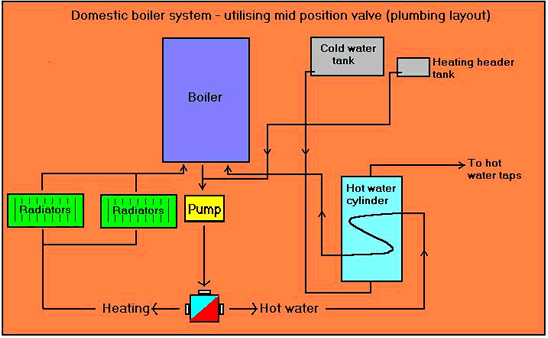
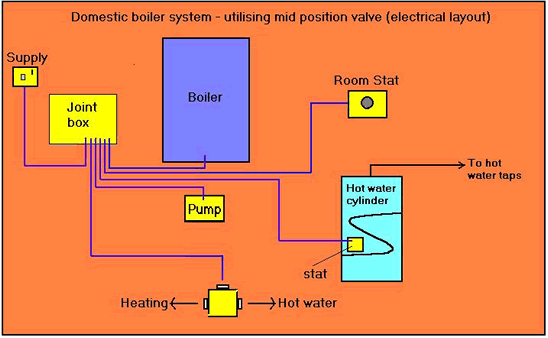
Standard Boiler Systems - example two

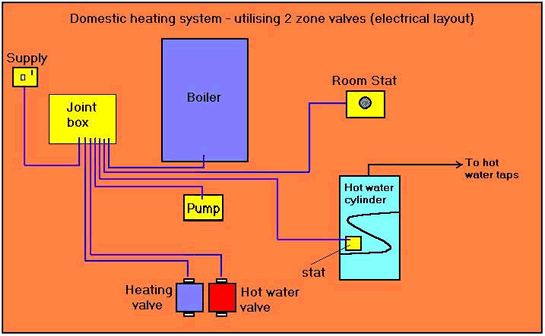
For further information, please mail me here direct